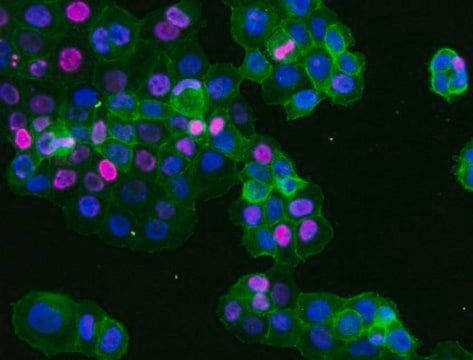MAK321
Acetaldehyde Assay Kit
sufficient for 100 fluorometric tests
Sinónimos:
Acetaldehyde Quantitation Kit
About This Item
Productos recomendados
usage
sufficient for 100 fluorometric tests
input
culture(s)
food(s)
serum
plasma
tissue
urine
beverage(s)
application(s)
cosmetics
food and beverages
detection method
fluorometric
relevant disease(s)
gastrointestinal diseases
storage temp.
−20°C
Categorías relacionadas
General description
Application
- Food and Beverage Testing
- Gastrointestinal Disease Research
Features and Benefits
Simplified Process: Experience a streamlined process with the addition of only a single working reagent and a 30 minute room temperature reaction, reducing complexity and saving valuable time and effort.
Compatibility with High-Throughput Systems: Easily incorporate our kit into high-throughput handling systems, ensuring smooth and accurate processing, enhancing efficiency in your laboratory workflow.
Suitability
Principle
Other Notes
signalword
Danger
hcodes
Hazard Classifications
Eye Dam. 1 - Met. Corr. 1 - Skin Corr. 1B
Storage Class
8A - Combustible corrosive hazardous materials
Certificados de análisis (COA)
Busque Certificados de análisis (COA) introduciendo el número de lote del producto. Los números de lote se encuentran en la etiqueta del producto después de las palabras «Lot» o «Batch»
¿Ya tiene este producto?
Encuentre la documentación para los productos que ha comprado recientemente en la Biblioteca de documentos.
Nuestro equipo de científicos tiene experiencia en todas las áreas de investigación: Ciencias de la vida, Ciencia de los materiales, Síntesis química, Cromatografía, Analítica y muchas otras.
Póngase en contacto con el Servicio técnico




